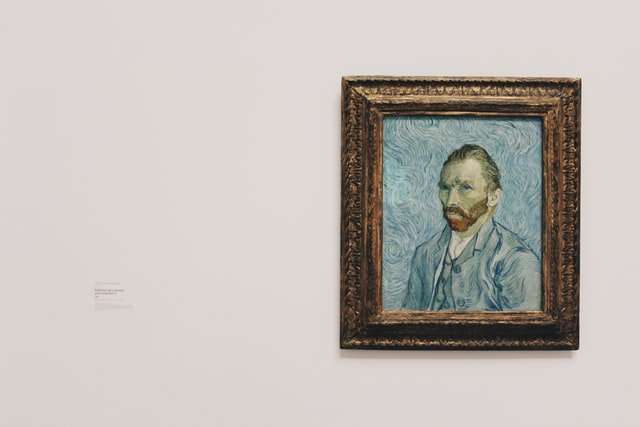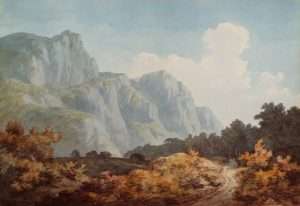The history of human art spans a period of over 100,000 years. It started out as simple explorations in lines and ochre and progressed towards the sophisticated styles seen in the Lascaux Cave paintings and the Venus of Laussel.
To begin, prehistoric artist used basic methods to create rudimentary artworks. These included dot paintings, rock carvings, and engravings. However, these primitive works served as an important starting point for more complex artworks to come.
The progression of prehistoric art is best observed through the archaeological findings throughout the world. The earliest examples of artwork have been found in Africa, Europe, Oceania, and the Americas. These sites can be dated back to approximately 35000 B.C., making them some of the oldest known artworks in existence today.
Prehistoric art is one of the most imposing branches of art. It is fascinating to know about the evolution of prehistoric art, how it came into existence, what are its major characteristics and why it is so famous and popular even today.
The history of prehistoric art has been studied for a long time. This branch of arts has been continuously evolving since the first paintings were created by prehistoric man. The history of prehistoric artwork dates back to more than 30,000 years ago when the Stone Age had already begun. The first work of prehistoric art that was discovered dates back to the Stone Age period.
Some researchers have tried to trace this branch of arts even further back in time by trying to reach an agreement on whether or not the cave dwellers and primitive people used any kind of images or symbols for recording important events in their lives or for preserving their religious beliefs. The discovery and research regarding prehistoric arts have been done primarily through archaeological studies, which were done in many excavations across the world, especially in Africa, India, Australia and America (United States).
The study of prehistoric arts helps to understand about what life was like during ancient times. This branch has been studied for decades because it presents a very interesting scenario about how life was evolving during ancient times. Instead of reading
In the prehistoric age artworks were done using different medium which included sticks, stones, bones and clay. These artworks were of different themes, which included hunting scenes, animals, birds and vegetable life. These paintings also included drawings of people who were believed to be dead people’s souls or spirits. The paintings also depicted tools which were used for hunting and for other daily activities like drawing of animals which were drawn as if they are running away from men that are hunting them.
The paintings that were found by archeologists had been done on walls of rock shelters and caves. The most ancient cave art has been dated back to thirty thousand years ago. The artworks found in caves had been done on the walls of rock shelters and caves. This type of painting had been done mostly on walls that were easily visible.
Till date numerous remains of prehistoric paintings have been found in a number of caves and rock shelters all over the world. Most famous among these paintings is the Lascaux cave paintings in France. These paintings consist of over one thousand images and have been done in many colors including red, yellow, black and white.”
The study of prehistoric art has undergone a massive transformation in the last several decades. For many years, professional scholars focused on the Western European Paleolithic and Neolithic, with a smattering of Mesoamerican research. It was not until the 1980s that Australian Aboriginal rock art began to be recognized as an important and unique source for archaeological research.
The art from Africa was neglected until the late 1980s when Paul Bahn and Jean-Paul Demoule published their seminal work on rock art in Africa. Since then, new finds have been documented from Zimbabwe, Namibia, Botswana, Kenya, Tanzania, Madagascar, Mozambique and South Africa.
In South America, the rock art record is particularly rich for Brazil and Argentina but it is also found in Bolivia, Peru, Ecuador and Chile. In North America, Canada and Alaska are home to a large body of rock art sites.
The most recent discoveries have been made in China where a number of significant new sites have been reported in recent years.”
The purpose of art work has changed over time. In the beginning, it was for survival: a record of hunts and battles, or a means to pass on knowledge to the next generation. It’s only in more recent times that art is made for beauty or religion.
Here are some examples from prehistoric times.
The bison on this cave painting at Pech Merle were etched on the wall with a stone tool about 22,000 years ago.
The Venus of Willendorf is a statuette carved by hand about 25,000 years ago to represent fertility.
This horse head is part of the Trois Frères cave paintings in France, created 20-30,000 years ago by Cro-Magnon man.
This style of pottery called Chupicuaro was done by the Chupicuaro people of Mexico between 300 BC and 600 AD.
An ivory carving of an elephant by Benvenuto Cellini (1500-1571) is one example of how art has been used to depict religious scenes and stories over time.
Prehistory is the period of time before written records. Ancient art is therefore pre-historic. It is typically classified as paleolithic (old stone age), mesolithic (middle stone age) or neolithic (new stone age).
The first prehistoric art was made during the paleolithic period, from 2.6 million years ago to around 10,000 BC. The best known examples are cave paintings such as those in Lascaux, France, which date from about 15,000 BC.
The Paleolithic Period (c. 2.5 million – c. 10,000 BC) was an important time in human development during which most of the major stone tool manufacturing traditions appeared and prehistoric communities began to domesticate plants and animals. Artistic works were generally carved or engraved on organic materials such as bone or ivory; however, the oldest-known piece of worked wood dates to about 8900 BC, and a wooden flute has been dated to 6670 BC. Cave painting and portable art such as figurines and beads predominated for most of the Paleolithic era but remain poorly represented in the archaeological record because of natural decay and climatic conditions.
In Europe there are numerous red or orange colored dots in caves that might have been painted by Neanderthals between 35



